Yeongju Punggi Insam Festival (경북영주 풍기인삼축제)
0m 21775 2023-09-14
Seongnae-ri, Punggi-eup, Yeongju-si, Gyeongsangbuk-do
+82-54-635-0020
Insam, ginseng, is a representative health food in Korea that boosts energy and immunity. Yeongju Punggi Insam Festival is held every October when ginseng is at its most nutritious. The festival includes various ginseng-themed programs like harvesting ginseng, trying foods made with ginseng, exhibitions, cultural programs and more. Ginseng and red ginseng products are also sold at the festival at discounted prices.
World Punggi Ginseng Expo (영주세계풍기인삼엑스포)
232.13116197931296m 0 2023-04-18
964, Sinjae-ro, Yeongju-si, Gyeongsangbuk-do
054-639-4801
Punggi-eup, Yeongju-si, Gyeongsangbuk-do is known as the first cultivation site of Korean ginseng. It is located in the highland area surrounded by Taebaeksan Mountain and Sobaek Mountain Range. The quality is firm because it is grown in rich soil, continental cold climate, and well-drained sandy loam with a large daily temperature range. It has a highly effective saponin content and an excellent immunity-enhancing effect.
This expo will be decorated with various things to see and enjoy, such as exhibitions, trade, conferences, events, experiences, and tours.
It plans to operate six exhibition halls, including the theme hall, life science hall, and ginseng future hall, and hold forums, academic conferences, talk concerts, and various conferences.
Punggi Ginseng Market (풍기인삼시장)
510.7847716034958m 20455 2021-06-08
8, Insam-ro, Yeongju-si, Gyeongsangbuk-do
+82-54-636-7948
Punggi Ginseng Market first opened in 1965, selling various vegetables with a focus on ginseng. Visitors can enjoy different kinds of ginseng products while also trying foods made with ginseng. Every late September to early October, Punggi Ginseng Festival is held, providing various events and programs for visitors to experience.
Sobaeksan Punggi Spa Resort (소백산풍기온천리조트)
4.4 Km 6426 2023-10-26
1400 Jungnyeong-ro, Yeongju-si, Gyeongsangbuk-do
+82-54-604-1700
Sobaeksan Punggi Spa Resort, which sits at the foot of Sobaeksan Mountain, has a wide variety of facilities and amenities, as well as a great view. The resort has an outdoor spa, a 25-square-meter outdoor swimming pool, Aqua Pool ride, a wading pool, a bade pool, and Yeonhwajeong, a great restaurant to enjoy delicious Korean food.
There is also a great spot to have an outdoor barbeque party with family and friends while enjoying the great taste of hanu (Korean beef). Sobaeksan Punggi Spa Resort aims to be the best spa resort for locals as well as tourists.
Seoneulgi Culture [Korea Quality] 서늘기문화[한국관광 품질인증]
7.5 Km 0 2023-12-04
119-1, Changjin-ro 194beon-gil, Yeongju-si, Gyeongsangbuk-do
+82-10-4891-7622
Seoneulgi Culture hanok stay in Yeongju, Gyeongsangbuk-do looks like one traditional hanok from the front, but in truth, is three houses. The guestrooms are a sarangchae with two rooms, ondol flooring, a private bathroom, veranda and front yard, and a middle building with a sleeping room, ondol attic, traditional kitchen, private bathroom and back yard. Barbecue equipment can be rented, and tents are available year-round. Downtown Yeongju is 5 minutes away by car.
Sobaeksan National Park (Gyeongsangbuk-do Region) (소백산국립공원(경북))
7.7 Km 35864 2023-02-17
Punggi-eup, Yeongju-si, Gyeongsangbuk-do
+82-54-638-6196
Sobaeksan National Park was designated as the 18th national park in December 1987. The features of Sobaeksan National Park include wildflowers and royal azaleas in spring and snowy scenery in winter. The mountain borders three provinces and four cities. Attractions include various peaks, temples, and waterfalls. The mountain is especially popular in May when royal azaleas are in full bloom and a natural forest tunnel is formed. Birobong Peak of the mountain is covered with snow six months of the year and is called the Alps of Korea.
Yeongju Birosa Temple (비로사 (영주))
8.1 Km 17872 2021-06-11
661-29, Samga-ro, Yeongju-si, Gyeongsangbuk-do
+82-54-638-5033
Birosa Temple is located at the southern foot of Birobong, the highest
peak of Sobaeksan Mountain. It was founded by revered Buddhist monk Uisang Daesa in the 20th year of King Munmu’s reign (AD 680) during the Silla Kingdom. The temple’s Buddha statues and the flagpole supports reveal the long history of this ancient temple.
To the left of the entrance to Birosa Temple stand a pair of flagpole supports. The 4.8-meter-high flagpole supports facing each other have a meticulous structure. Inside the temple precincts is Jingongdaesa Bobeoptapbi, a stele with a stone turtle base erected in honor of the great monk Jingong Daesa.
The temple enshrines the Amitabha and Vairocana Buddha statues, which were created during the Silla Kingdom in the late 9th century. Both of these Buddha statues realistically depict the human form, and show similar characteristics, which reveal that they were crafted by the same artisan. Preserving such valuable cultural heritages, Birosa Temple also has a serene view of Birobong Peak on
Sobaeksan Mountain.
* Major cultural properties: Stone Seated Amitabha and Vairocana Buddha Statues (Treasure No. 996), Samgadong Stone Flagpole Supports (Provincial Tangible Cultural Property No. 7)
Huibangsa Temple (Yeongju) (희방사(영주))
8.1 Km 18686 2024-03-08
278 Jungnyeong-ro 1720beon-gil, Punggi-eup, Yeongju-si, Gyeongsangbuk-do
Huibangsa Temple is a temple located at an altitude of 850 meters in a valley south of Yeonhwabong Peak within Sobaeksan National Park. Founded in 643, it preserves the first Korean Buddhist scripture, the "Worinseokbo," and traditional Korean architectural styles. Surrounding areas are adorned with Sobaeksan Mountain's forests, offering opportunities for forest bathing and hiking. Flowing through the valley is a stream, adjacent to which stands the Huibangpokpo Falls, towering at 28 meters high.
Sosuseowon Confucian Academy [UNESCO World Heritage] (소수서원 [유네스코 세계문화유산])
8.2 Km 19195 2020-12-04
2740, Sobaek-ro, Yeongju-si, Gyeongsangbuk-do
+82-54-639-7691
Sosuseowon Confucian Academy is situated at the foothills of Sobaeksan Mountain. Sosuseowon was the first to receive a royal charter as a private Confucian academy along with financial support and acknowledgement by the king. This academy was originally founded under the name Baegundongseowon in 1542 by a Confucian scholar Ju Se-bung, who was also the magistrate of Punggi County at the time. Baegundongseowon first started as an academic institution that enshrined a memorial tablet of An Hyang, a Confucian scholar whom Ju Se-bung had deep respect for. After Ju Se-bung left the county, Toegye Yi Hwang, a renowned Confician scholar, became his successor and made an official request to the king to be granted a royal charter. The request was well received, and the king renamed the institution to its current name, Sosuseowon.
Jukgyegugok Valley (죽계구곡)
8.3 Km 33246 2017-12-22
Jukgye-ro 315beon-gil, Yeongju-si, Gyeongsangbuk-do
Jukgyegugok Valley is the valley stretching from Baejeom-ri to Choamsa Temple.
Joseon-era Confucian scholar Toegye Yi Hwang (1501-1570) was inspired by the
scenery of the valley and the enchanting sound of the flowing water, so he came
up with names for each of the nine sections of the valley and collectively called
them Jukgyegugok (nine bamboo valleys). The valley presents a splendid sight
indeed with crystal clear waters, lush forest, and white rocks. In summer, vacationers
from around the country flock to Jukgyegugok Valley to cool off from the sweltering
heat by dipping their feet in the refreshing waters of the valley. Famous tourist
attractions near the valley include Sosuseowon Confucian Academy, Buseoksa Temple,
and Eupnaeri Mural Tomb.
* Choamsa Temple
On the path that ascends from Jukgyegugok Valley, there is a small temple
located at the foot of Sobaeksan Mountain. The great monk Uisang Daesa of the
Silla Kingdom reached this place during his search for an ideal site to build
a Buddhist temple invoking national security. He set up a small thatched hut
for a temporary stay until he found the most propitious spot, on which he built
Buseoksa Temple. In the site where his thatched hut once stood, he built another
temple and named it Choamsa Temple. The original structure was destroyed by
fire during the Korean War (1950-1953). The temple has been restored to its
present state by the Buddhist monk Lee Bo-won after years of arduous efforts.
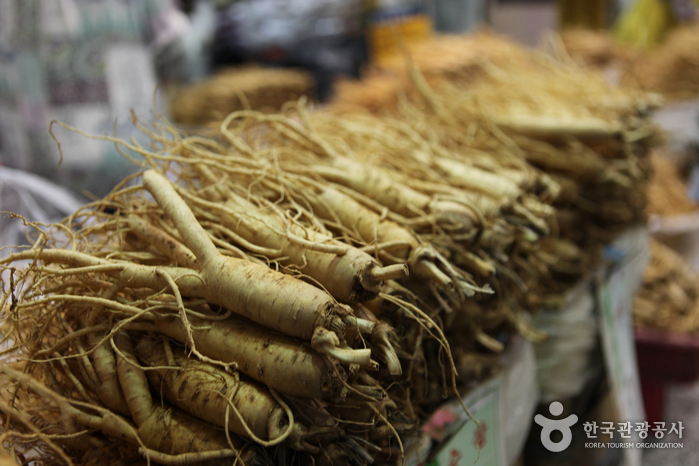
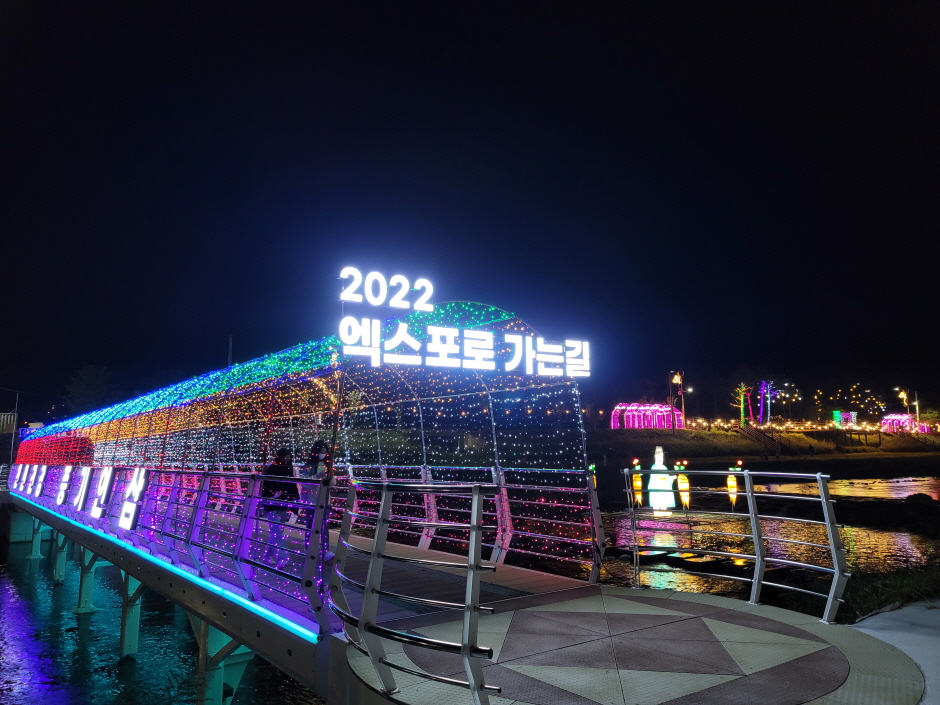
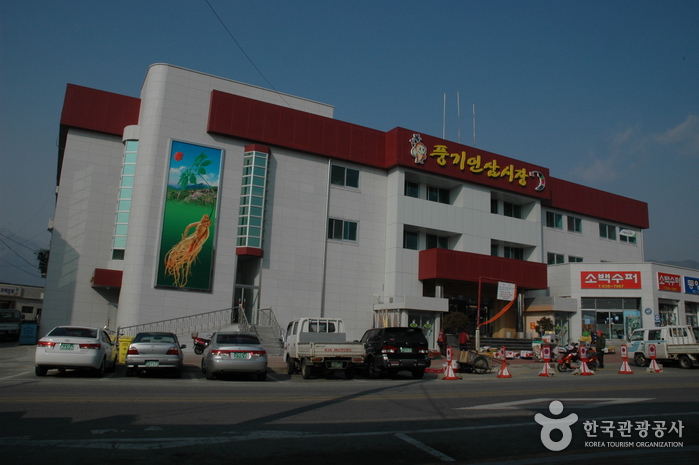

![Seoneulgi Culture [Korea Quality] 서늘기문화[한국관광 품질인증]](http://tong.visitkorea.or.kr/cms/resource/25/3042325_image2_1.jpg)
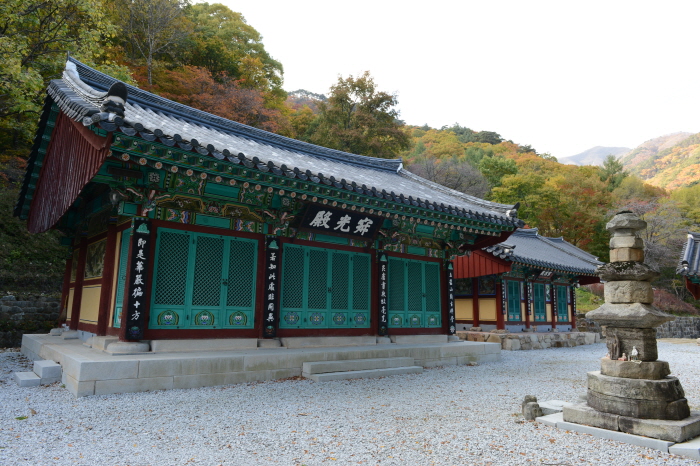
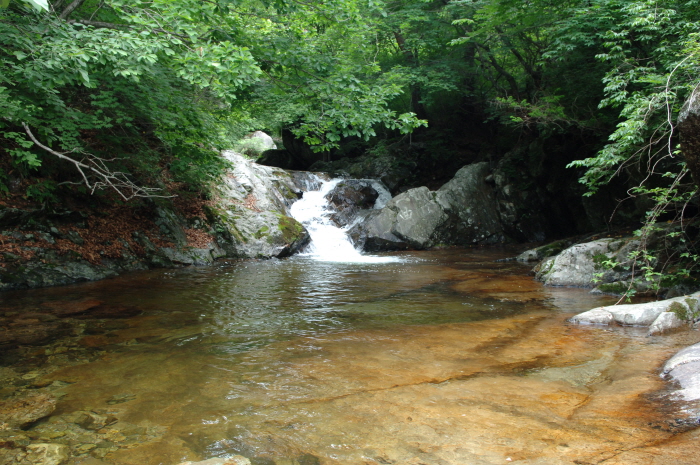
 English
English
 한국어
한국어 日本語
日本語 中文(简体)
中文(简体) Deutsch
Deutsch Français
Français Español
Español Русский
Русский